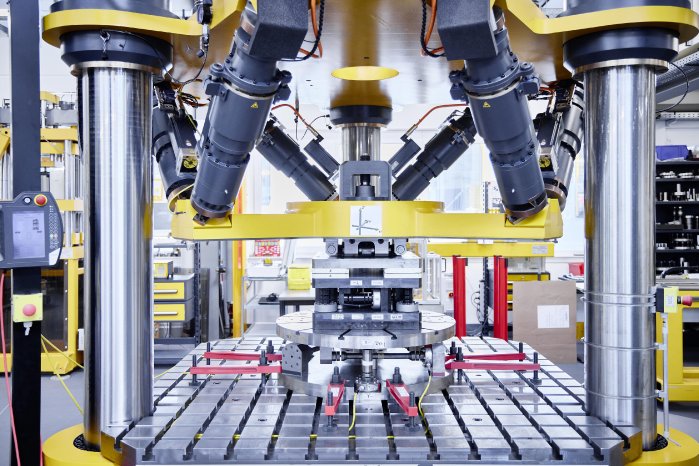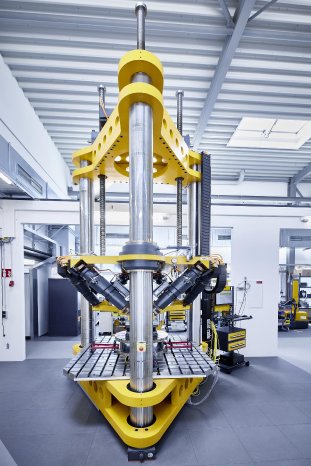When it comes to measuring forces along several vector axes, possibly simultaneously, so-called multi-axis transducers are used. Current examples of applications for these high-precision sensors can be found in the aerospace industry, in wind energy technology or on test benches for vehicles.
To ensure precision at all times, multi-axis transducers must be calibrated at regularly defined intervals - a service that is also part of GTM's comprehensive portfolio. In 2005, GTM added the first measurement method developed in-house and the first standard machine for multi-axis transducers to its range of services. In the meantime, a further, more precise measuring method has been added, as well as a second standard machine. Only recently, in April 2022, the German Accreditation Body (DAkkS) re-accredited GTM's measuring methods and calibration machines.
The measurement methods used for the calibration of multi-axis transducers are complex. Even with the previously established and proven method, which is still part of GTM's service range, up to three of the different vector axes (x, y, z) are measured one after the other during calibration, depending on the application, and the measuring device is also operated manually. A time-consuming procedure that GTM has rethought from the ground up with the newly developed multi-axis calibration machine. With this device, it is now possible to measure forces and torques in all vector axes simultaneously, and to do so completely automatically. Another special feature is that gravity can be simulated in all axes.
For customers who benefit from GTM's extensive know-how and take advantage of the calibration services offered, this means above all an enormous time advantage, since the multi-axis transducers to be calibrated are back in use more quickly than before. Also, the data obtained with the newer method is more conclusive, its informative content about the behavior of the calibrated object is much higher. Last but not least, the relative uncertainty of measurement of the new standard machine is groundbreaking at only 0.1 % compared to the existing measuring device of 0.5 %.
Some industries have already recognized the importance of multi-axis metrology, and it will continue to grow strongly in importance over the next few years. With the new standard machine for multi-axis transducers, GTM has further developed a technology with which the company should significantly expand its leading position in the field of metrology - and GTM's customers and partners will also noticeably benefit from this lead.



